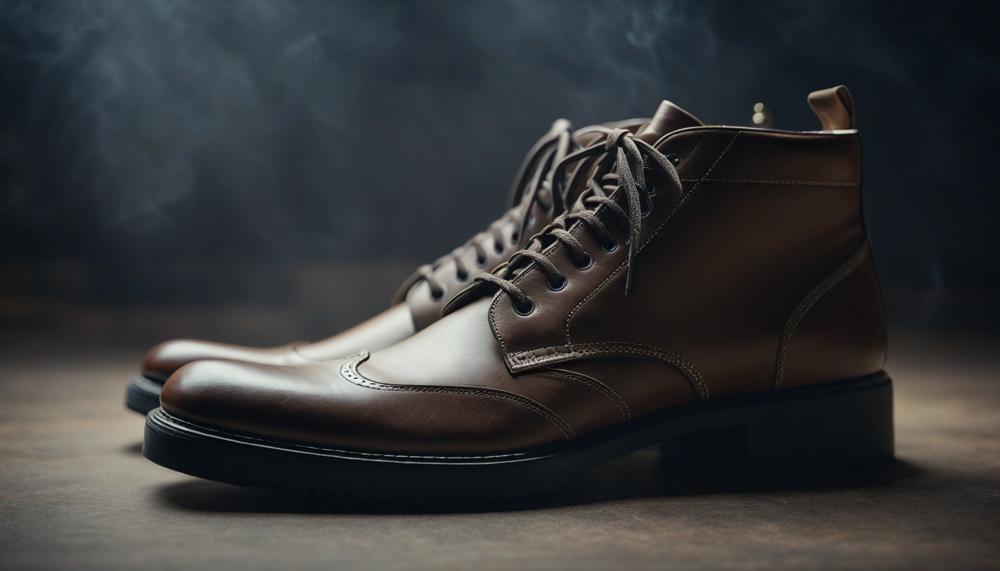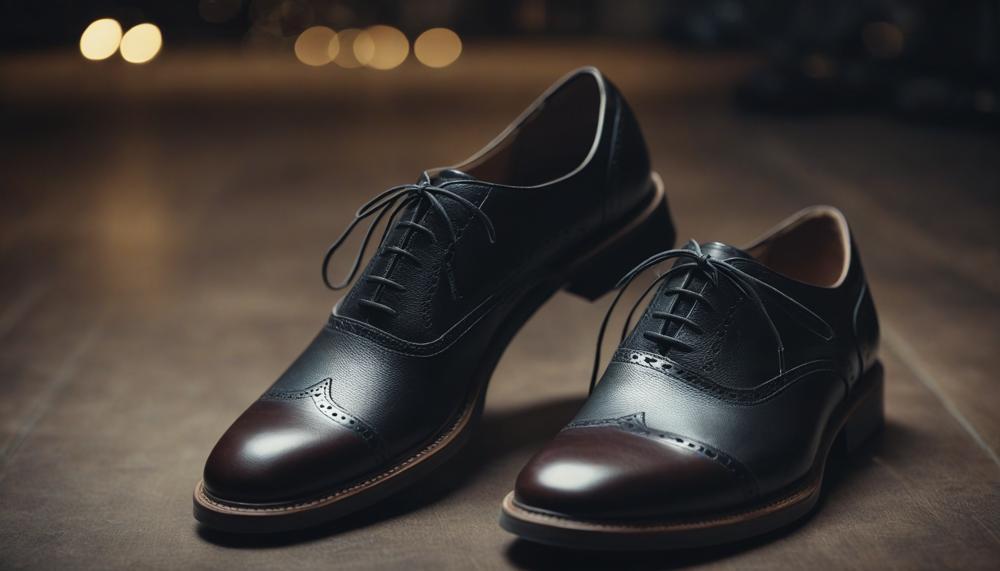Choosing the right footwear after a hip replacement surgery isn’t just about fashion—it’s crucial for your recovery and long-term comfort. The wrong shoes can increase the risk of falls, put undue stress on your new hip, and slow down your healing process. On the other hand, the right shoes can significantly enhance your comfort and stability as you regain mobility.
This article aims to guide you through selecting the best shoes after your hip replacement surgery, ensuring that you step forward with confidence in your recovery journey. Here are the essential takeaways:
- Comfort is Key: Post-surgery shoes should offer exceptional comfort and support. This means picking footwear that eases the load on your hip and provides a stable base for walking.
- Type Matters: During the early recovery phase, opt for walking or running shoes instead of heels, flats, or sandals. The latter might look nice but won’t give you the support your hip needs.
- Avoid Extreme Traction: Shoes that grip too much can cause your leg to twist or pivot unexpectedly, which can be harmful to your new hip.
- Smart Choices: Some recommended footwear includes the Kizik walking shoes, known for their easy slip-on design, and the New Balance DRFT V1 Running Shoe, which offers affordability and support for women. For men, the Saucony Integrity Walker 3 and New Balance 411 V1 are excellent choices.
Whether you’re taking a gentle walk around the block or gradually returning to your daily routines, wearing the right shoes will make all the difference in your recovery and comfort. Let’s dive into why these specific recommendations stand out and how they can help you get back on your feet with ease.
Select Comfort and Support Over Style After THR
Contents
- 1 Select Comfort and Support Over Style After THR
- 2 What’s Different Between Hip and Knee Replacement Shoe Selection?
- 3 Do I Need to Get New Shoes After My Hip Replacement?
- 4 PT SHOE RECOMMENDATIONS POST OP HIP REPLACEMENT
- 5 Best Slip On Shoes After Hip Replacement – Unisex
- 6 2 Best Women’s Shoes After Total Hip Replacement
- 7 2 Best Men’s Shoes After Total Hip Replacement
- 8 Conclusion
After a hip replacement, prioritising comfort and support over style when choosing shoes is critical for a smooth and safe recovery. Here’s why:
Stability and Balance
Shoes with adequate support help maintain stability and balance, reducing the risk of falls and further injury. High-quality walking or running shoes offer the necessary cushioning to absorb shock and provide a steady gait.
Minimising Joint Stress
Supportive shoes evenly distribute weight, alleviating pressure on the new hip joint. This is essential during the initial recovery phase when the hip is still healing and adjusting.
Avoiding Dislocation
Shoes with extreme traction or high heels can lead to twisting or pivoting movements, increasing the risk of hip dislocation. Opting for footwear with moderate traction prevents such hazardous movements.
Ease of Use
Slip-on shoes like the Kizik Madrid are ideal, as they allow easy wearing without bending, which is crucial for adhering to post-surgery hip precautions.
Proven Recommendations
Shoes like the New Balance DRFT V1 running shoe for women and the New Balance 411 V1 walking shoe for men are specifically recommended by experts for their comfort and support.
What’s Different Between Hip and Knee Replacement Shoe Selection?
No, there is not a significant difference in shoe selection between those who have had hip replacement surgery and those who have had knee replacement surgery. Both groups should prioritize shoes that offer comfort and support, especially during the initial recovery period.
The main distinction lies in the avoidance of shoes with extreme traction for hip replacement patients to prevent dislocation.
Here’s a breakdown of key considerations for each group:
| Shoe Feature | Hip Replacement | Knee Replacement |
| Comfort | Essential | Essential |
| Support | Crucial | Crucial |
| Traction | Avoid extreme traction | Normal traction acceptable |
| Style of Shoe | Walking/running shoes recommended, avoid heels | Walking/running shoes recommended, style less restricted |
In both scenarios, footwear should be easy to don and doff, such as those with elastic laces or slip-on designs, to minimize bending and stress on the new joints.
Do I Need to Get New Shoes After My Hip Replacement?
The short answer is yes, you should consider getting new shoes after your hip replacement. The right shoes can significantly impact your recovery and overall comfort.
| Key Factors | Explanation |
| Comfort and Support | Shoes should provide ample cushioning and support to reduce strain on the hip joint. Look for shoes with padded insoles and good arch support. |
| Avoid Extreme Traction | Shoes with extreme traction can cause twisting or pivoting, which might lead to hip dislocation. Opt for shoes with moderate grip. |
| Easy to Put On | Slip-on designs or shoes with elastic laces, such as Kizik walking shoes, help avoid bending forward and reduce the risk of violating hip precautions. |
| Weight of the Shoe | Lightweight shoes reduce fatigue and make walking more comfortable. For instance, the Kizik Madrid is known for being lightweight yet supportive. |
| Type of Shoe | Walking or running shoes are ideal during the early recovery phase. Avoid heels, flats, and sandals as they often lack the necessary support and stability. |
PT SHOE RECOMMENDATIONS POST OP HIP REPLACEMENT
Post-operative footwear recommendations for hip replacement patients focus on ensuring stability, support, and comfort during the recovery phase. Here’s a succinct guide to choosing the best footwear:
- Flat and Wide Sole: Shoes with a flat and wide base provide better stability, which is crucial to avoid falls and maintain balance.
- Rubber Soles: Opt for rubber-soled footwear to benefit from their natural grip and reduce slip hazards.
- Ankle Support: Shoes should offer firm support around the ankle. This aids in aligning the foot and ankle, reducing stress on the hip.
- Swelling Accommodation: Post-surgery swelling is common; therefore, shoes should allow for a size increase. Select shoes with adjustable features such as Velcro straps or flexible materials.
- Easy to Use: Choose shoes that are easy to put on and take off to minimize bending and twisting movements at the hip.
Best Slip On Shoes After Hip Replacement – Unisex
When selecting the best slip-on shoes after a hip replacement, there are several key features to prioritize for optimum comfort and support, crucial for both men and women during their recovery.
The top features, each with their own importance, are laid out in a clear and straightforward manner.

| Feature | Reason for Importance | Impact on Recovery |
| Wide Toe Box | Prevents pressure on swollen toes and allows natural foot movement. | Helps in reducing discomfort and aids in the natural healing process. |
| Low Heel Height (max 1 inch) | Maintains even weight distribution, reduces hip strain. | Improves stability and prevents pain during mobility. |
| Good Arch Support | Ensures foot stability and balances the lower body. | Alleviates hip pressure, enhancing alignment and gait. |
| Non-slip Sole | Prevents slips and falls by providing better traction. | Increases safety, especially crucial during early recovery stages. |
| Breathable Material | Keeps feet dry and comfortable, reducing potential skin irritation. | Supports healthy foot environment, crucial during increased foot swelling. |
Choosing shoes with these features is not just about comfort—it’s about fostering a safer, smoother recovery. A wide toe box accommodates post-surgery swelling, allowing the toes to spread naturally without constriction. Low heels keep the body aligned, minimizing undue stress on the new hip joint.
Arch support is essential, as it distributes weight evenly, preventing overcompensation and subsequent hip stress. Non-slip soles are critical for preventing falls, a common risk post-surgery due to balance challenges. Finally, breathable materials like leather or mesh ensure feet stay cool and dry, reducing discomfort and health risks associated with poor ventilation.
2 Best Women’s Shoes After Total Hip Replacement
The two best women’s shoe styles for individuals recovering from a total hip replacement are slip-on shoes with adjustable straps and supportive walking shoes with flat soles.
Recommended Shoe Styles
| Shoe Style | Features | Benefits |
| Slip-On Shoes with Adjustable Straps |
|
|
| Supportive Walking Shoes with Flat Sole |
|
|
Slip-On Shoes with Adjustable Straps
Slip-on shoes with adjustable straps offer a practical solution for those who find it challenging to bend down and tie their shoes. These shoes are ideal because they:
- Provide an easy on-and-off experience, crucial for those with restricted hip mobility.
- Allow for adjustments to accommodate foot swelling, which is common post-surgery.
- Feature a wide toe box and low heel, promoting proper foot alignment and reducing hip strain.
Example: Clarks Women’s Slip-On Shoes
Supportive Walking Shoes with Flat Sole
Supportive walking shoes are essential for ensuring stability and comfort during the recovery process. Key features include:
- A contoured footbed that supports the natural shape of the foot.
- Arch support to maintain foot structure and reduce additional strain on the hip.
- Shock-absorbing soles that mitigate impact during walking, protecting the healing hip joint.
Example: New Balance Walking Shoes
Both shoe styles are designed with recovery in mind, focusing on comfort, support, and stability.
2 Best Men’s Shoes After Total Hip Replacement
Post total hip replacement surgery, it is vital for men to wear shoes that ensure stability, support, and comfort. The top two recommended types of shoes are flat shoes and athletic shoes. Both styles are designed to minimize stress on the hip area while providing substantial comfort and support.
| Shoe Type | Benefits | Recommended Features |
| Flat Shoes | Even weight distribution, reduces hip stress | Non-heeled, cushioned insole, wide toe box |
| Athletic Shoes | Enhanced support, prevents slips | Cushioned sole, nonslip outsole, good ankle support |
Conclusion
Choosing the right shoes after hip replacement surgery isn’t just a comfort issue—it’s a pivotal part of your recovery. The right footwear can enhance stability, minimize stress on your new hip, and prevent falls, making each step forward a positive stride toward healing.
Prioritize comfort and support above all. Shoes that cushion and stabilize your feet, like high-quality walking or running shoes, are ideal. Early in your recovery, avoid heels, flats, or sandals as they lack the necessary support.
Be cautious with traction. Shoes with too much grip can cause your leg to twist unexpectedly, risking hip dislocation. Opt for footwear with moderate traction to ensure safe, controlled movements.
Ease of use is also essential. Slip-on designs, like Kizik walking shoes, allow you to put on and take off shoes without bending, adhering to post-surgery precautions.
Specific recommendations include the New Balance DRFT V1 Running Shoe for women and the Saucony Integrity Walker 3 for men. These shoes are praised for their comfort, support, and suitability for post-hip replacement recovery.






